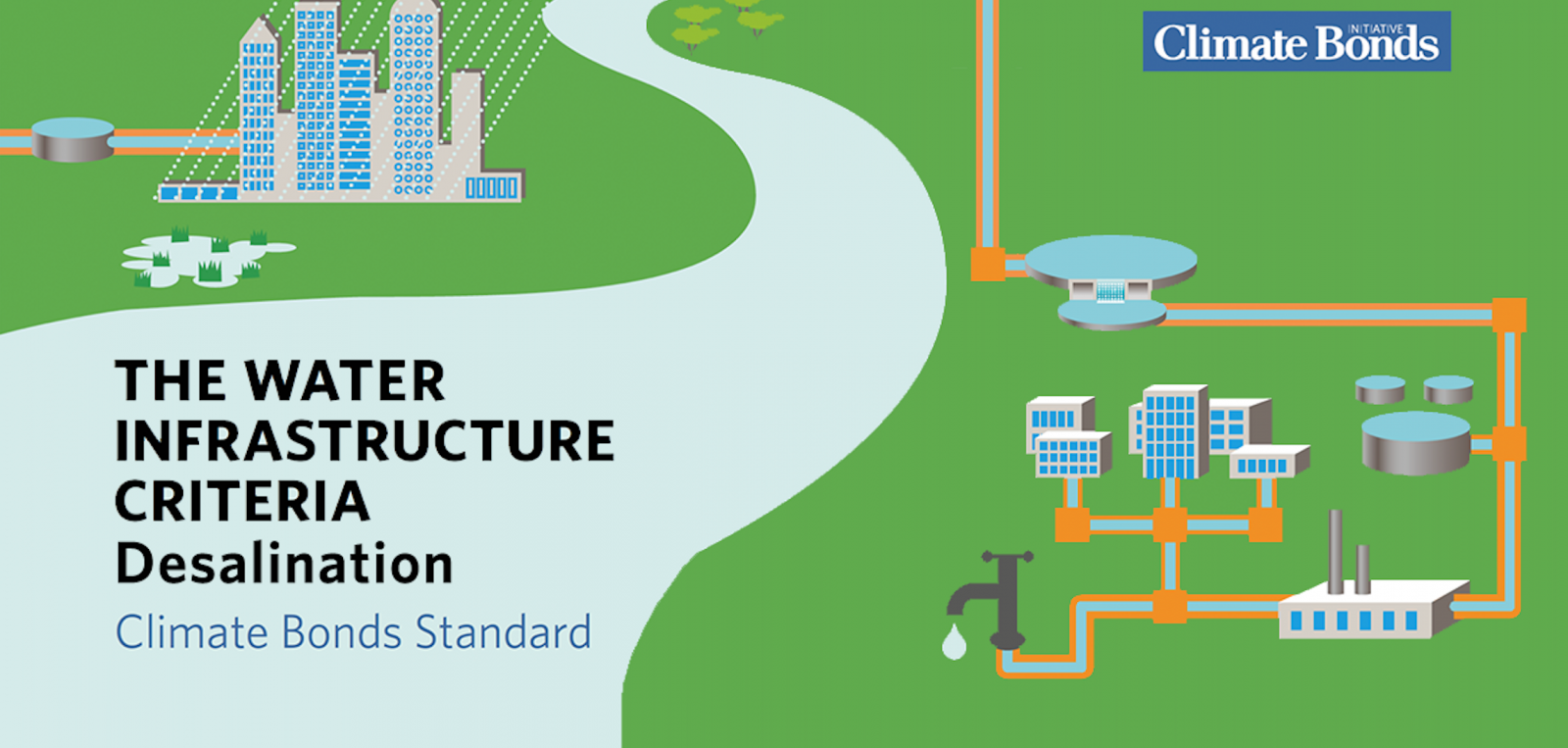Fresh thinking for freshwater provision in expansion of Climate Bonds Standard
The Climate Bonds Water Criteria have been updated to include robust, ambitious and market-leading requirements for Desalination Plants.
Certification is now available against the Climate Bond Standard.
The newest addition to the Criteria reflects the latest scientific input and market knowledge for determining whether a bond is financing climate-aligned desalination assets.
These updated Criteria also provide a science-based assessment process on the low carbon credentials of desalination plants and whether or not a green bond’s proceeds are aligned with the Paris Agreement.
The Criteria were developed by a Technical Working Group comprised of global experts in desalination and were endorsed by the Climate Bonds Standard Board.
Development Process
Climate Bonds Water Infrastructure Criteria have been developed in three phases. Phase 1 Criteria covers engineered water infrastructure.
Phase 2 Criteria covers nature-based and hybrid water infrastructure for such purposes as water collection, storage, treatment and distribution, flood protection and drought resilience.
The addition of Desalination Criteria marks Phase 3 of the Criteria development. These three components now form the whole Criteria.
Information on existing Water Certifications are available in our Certification Database.
Climate-resilient water supply without the climate negatives
It is projected that up to 60% of the global population could experience some form of water scarcity by 2025. To solve this issue, developing a reliable water supply that is resilient to climate impacts will be crucial.
Resilient water supply doesn’t just encompass desalination. Smart water reuse and conservation along with improved conventional water management and managing consumption are equally important.
Today, desalination is already providing clean drinking water to over 300 million people worldwide. This is projected to increase, particularly where those conventional water supplies are thinly stretched.
But historically, desalination has come with some negatives. Desalination plants have to closely manage their feedwater and highly saline brine discharge.
Another issue is the high energy consumption of desalination plants. Pair high consumption with an emission-intensive grid supply and a plant’s emissions can be extremely high – certainly not in line with the Paris Agreement.
There is growing industry awareness of the need for desalination to decarbonise. But until now, there were no industry green standards that dictate what Paris-aligned desalination looks like.
Desal Criteria - First of their kind
The addition of Desalination to the existing Water Criteria are the first attempts at defining how desalination needs to operate to be Paris-aligned. It marks a significant step towards greening a sector with significant potential for decarbonised growth, crucial for meeting future clean water needs.
It is hoped the establishment of the Criteria will provide an impetus for investors to identify desalination plants that can go beyond business as usual. The new Criteria could also provide a starting point for other green taxonomies and standards to consider Paris-compliant desalination in their own national context.
Desalination Features
- Desalination plants must meet a specific threshold separate from other water assets
- The average carbon intensity of a plant’s energy must be at or below 100g CO2 /kWh over the remaining lifetime of the plant
- Issuers must complete the Adaptation & Resilience Checklist in the Water Criteria as usual, with two additional questions for desalination plants to address: brine disposal and feedwater intake
Information Suite
There are 3 options depending on how much detail is required.
- Brochure – Summary of the Water Criteria
- Criteria Document – Full details of the Water Criteria
- Background Paper – Summary of discussions and rationale for additional Criteria
Evolutionary Process
One of the key aspects of the Climate Bond Standard Sector Criteria is their regular revision and improvement. As industries evolve and scientific knowledge improves, the Criteria are continuously revisited. This ensures the Criteria are as robust as possible and fit for purpose.
Each revision follows the same rigorous science-based process as the original Criteria, carried out by the relevant Technical Working Group, scrutinised by the Climate Bonds Standard Board.
The last word
These latest Criteria will provide another tool for investors, governments and industry to move water infrastructure and supply towards low carbon outcomes.
As more Criteria are developed and the reach of our international standard scheme expands, market confidence and transparency will increase, alongside the growth of global green debt markets.
We would like to extend our gratitude once again and sincerely thank all TWG members and their constituent organisations for their invaluable support and guidance in updating and developing these additions to the Water Criteria.
'Til next time,
Climate Bonds.

